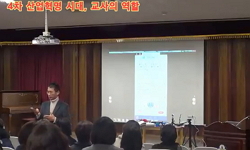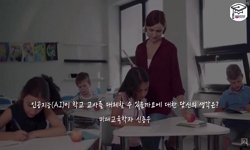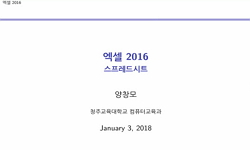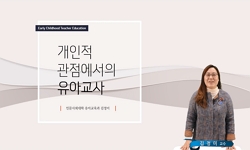The purpose of this study was to determine the teachers’ perception and the needs for developing a transition education model of students in physical and multiple disability schools. To meet the purpose, the specific objectives were (1 to identify t...
http://chineseinput.net/에서 pinyin(병음)방식으로 중국어를 변환할 수 있습니다.
변환된 중국어를 복사하여 사용하시면 됩니다.
- 中文 을 입력하시려면 zhongwen을 입력하시고 space를누르시면됩니다.
- 北京 을 입력하시려면 beijing을 입력하시고 space를 누르시면 됩니다.
전환 교육 모형 개발을 위한 지체 부자유 학교 교사 지각 및 요구 수준 연구 = (A)study on the teachers' perception and the needs for developing a transition education model in school for physical and multiple disabilities
한글로보기https://www.riss.kr/link?id=T8934102
- 저자
-
발행사항
경산: 대구대학교, 2003
-
학위논문사항
학위논문(박사) -- 대구대학교 대학원 , 특수교육학과 중복.지체부자유아교육전공 , 2003
-
발행연도
2003
-
작성언어
한국어
-
주제어
장애아 교육[障碍兒敎育] ; 전환교육모형 ; 지체부자유 ; 학교 ; 교사 ; 지각 ; 요구 ; TEACHER PERCEPTION ; TRANSITION ; EDUCATION ; SCHOOL ; PHYSICAL ; MULTIPLE ; DISABILITIE
-
KDC
379.15 판사항(4)
-
DDC
371.916 판사항(21)
-
발행국(도시)
경상북도
-
형태사항
vi, 202p.; 26cm
- 소장기관
-
0
상세조회 -
0
다운로드
부가정보
다국어 초록 (Multilingual Abstract)
The purpose of this study was to determine the teachers’ perception and the needs for developing a transition education model of students in physical and multiple disability schools. To meet the purpose, the specific objectives were (1 to identify the disability characteristics of students and their transition types or patterns through schooling, (2) to measure both the needs and the actual implementation as perceived by teachers for transition education of students in physical and multiple disability schools, and ( 3 ) to determine the validity of a conceptual model for transition education of students with physical and multiple disabilities as perceived by teachers.
The subjects used for the study were 253 consisting of 15 class teachers in kindergartens, 112 class teachers in elementary schools, 65 class teachers in middle schools, and 61 class teachers in high schools for the physical and multiple disability. The researcher developed a questionnaire based on the review of literature and a pilot test. The questionnaire included questions about characteristics of individual respondent teacher, disability characteristics of disability students, transition types through schooling, needs for transition education of students with physical and multiple disabilities, current status of transition education provided by the physical and multiple disability school, and the validity of a conceptual model for transition education of students with physical and multiple disabilities. Using the mailed questionnaire developed by the researcher collected the data. The response rate was 87% but after the data screening, 173 responses were analyzed.
The results of the study were as follows;
First, the prevalent disabilities among students in physical and multiple disability schools were cerebral palsy with spasticity and quadriplegia. Their transitional types were clinic center, home, or child welfare center in transition from preschool to kindergarten, special school, child welfare center, or regular elementary school in transition from kindergarten to elementary school, and special school, clinic center, or welfare center in transitions from elementary school to middle school to high school. In transition from high school to post high school, most students participated in post-secondary education, vocational training center, employment, or protection institution.
Second, there was a wide gap between the needs and the actual provision by special school for transition education of students with physical and multiple disabilities. The needs of transition education for students in physical and multiple disability school were largely found in 11 items about planning and implementation, 19 educational contents, and 7 outcomes of the transition education. However, there was no difference among needs of transition education according the school level.
Finally, a systematic approach to develop a model for transition education of students with physical and multiple disabilities should be applied. In an ideal model for transition education, some steps and components such as analysis step, program planning and implementation step, outcome evaluation step, follow-up step, student and parent participation and decision-making component, and collaboration and support service component with the related institutions should be included.
Based upon the findings of this study, some recommendations were made for further research. First, a transitional type or path of students with physical disability should be examined on the regular basis. Second, an instrument to measure the transitional readiness or ability of students should be developed. Third, a proposed conceptual model for transition education of students with physical disabilities should be elaborated.
목차 (Table of Contents)
- 목차
- I.서론 = 1
- 1. 연구의 의의 = 1
- 2. 연구의 목적 = 5
- 3. 용어의 정의 = 5
- 목차
- I.서론 = 1
- 1. 연구의 의의 = 1
- 2. 연구의 목적 = 5
- 3. 용어의 정의 = 5
- 4. 연구의 제한점 = 6
- II. 이론적 배경 = 7
- 1. 전환 교육의 개념과 발달 = 7
- 2. 전환 교육의 원리 및 모형 고찰 = 11
- 3. 전환 교육 프로그램 개발과 운영 = 39
- 4. 지체 부자유 학교 전환 교육 모형 연구 = 57
- III. 연구 방법 = 95
- 1. 연구 대상 = 95
- 2. 연구 도구 = 96
- 3. 연구 절차 = 98
- 4. 자료 처리 = 100
- IV. 연구 결과 = 101
- 1. 지체 부자유 학교 학생의 장애 특성과 전환 유형 분석 = 101
- 2. 지체 부자유 학교 교사가 지각한 전환 교육의 요구 수준과 학교에서 실시되는 실행 수준 분석 = 111
- 3. 지체 부자유 학교 전환 교육의 개념적 교육 모형에 대한 교사의 지각 = 140
- V. 고찰 = 161
- 1. 연구 방법의 고찰 = 161
- 2. 연구 결과의 고찰 = 164
- VI. 결론 = 169
- 1. 결론 = 169
- 2. 제언 = 171
- 참고문헌 = 172
- 영문초록 = 187
- 부록 = 189













